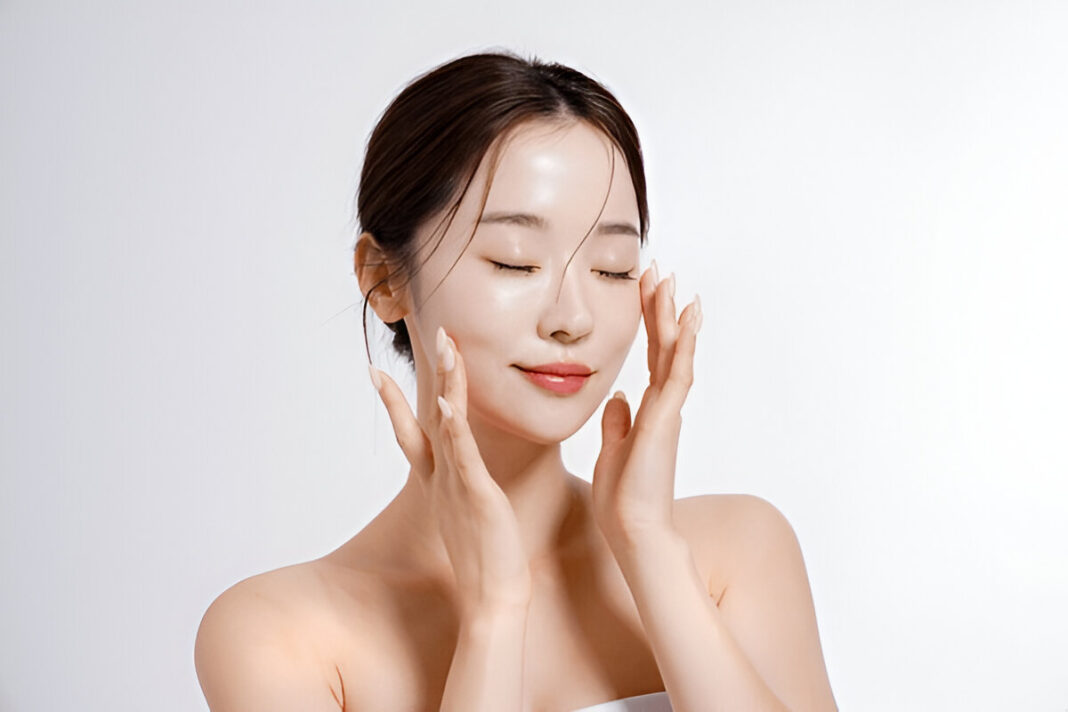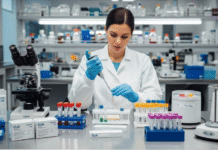“Glass skin” is a term that is usually associated with the beauty industry for the last few years. Glass skin means a clear, luminous, and almost translucent skin. This glass skin or skincare was originally just made in South Korea, but fans around the world are now going crazy over it. However, glass skin is not just for show; it is the embodiment of an entire philosophy – a philosophy of rigorous skincare, advanced dermatological treatment, and a holistic understanding of beauty. This article will delve into the rise of glass skin, the science behind it, and here and now modern dermatological techniques that make such an ideal possible.
Understanding Glass Skin
Achieving a poreless, dewy, and glowing skin complexion, popularly referred to as glass skin, requires genetics combined with a rigorous skincare routine, and increasingly dermatological procedures. Glass skin beauty differs from most of the trends promoted using makeup, as it seeks to enhance the actual texture and transparency of skin. The distinguishable characteristics of glass skin are a deep hydration, an even skin tone, and the glow of light through it (Park & Kim, 2021).
The Role of Skincare in Achieving Glass Skin
A proper skincare regime is the cornerstone for glass skin. A possible regimen is:
- Double Cleansing: It removes makeup and sunscreen first with the oil-based cleanser (Choi, 2020) and then clears dirt and sweat deep in the pores with a water-based cleanser.
- Exfoliation: Regular use of AHAs or BHAs is excellent for removing dead skin surfaces and for cell turnover at the same time (Lee et al., 2019).
- Hydration: Hydration is another very important aspect necessary for a dewy and supple complexion. These are issues regarding moisture content levels, and hyaluronic acid, glycerin, and ceramides are involved (Kim et al, 2021).
- Layering Lightweight Serums: Use of niacinamide, vitamin C, and peptides enhancing skin elasticity and brightness (Seo & Jung, 2020).
- Sunscreen Protection: Apply broad-spectrum sunscreen every day because UV rays hasten skin aging and pigmentation. It is a crucial part of maintaining a glass-like complexion (Lim et al., 2019).
The Role of Dermatology in Glass Skin
Skincare routines to some extent set the stage for obtaining glass skin, but modern dermatology provides advanced treatments that fast-track the process. These include:
- Chemical Peels: These treatments exfoliate the skin using acids, improving its texture and reducing hyperpigmentation. Glycolic acid peel, notably, was found to enhance skin clarity and hydration levels (Yoon et al., 2020).
- Microdermabrasion: Another minimally invasive procedure, microdermabrasion removes the outermost layer of dead skin cells to give the skin a smooth, radiant texture (Rodan et al., 2020).
- Laser Treatments: Fractional laser therapy and intense pulsed light (IPL) treatments are reducing pigmentation, shrinking pores, increasing collagen production, and working toward a flawless complexion (Kwon et al., 2019).
- Hydrafacial Therapy: Instant rejuvenation of skin texture and hydration is provided, involving exfoliation along with deep-cleansing and infusion of nourishment (Baek & Cho, 2021).
- Microneedling with PRP: Coupling platelet-rich plasma (PRP) therapy with microneedling promotes collagen production and skin rejuvenation, thus enhancing texture and radiance (Jung et al., 2020).
Lifestyle Factors Contributing to Glass Skin
Apart from skincare and dermatological treatments, lifestyle choices are very important in achieving glass skin. Some factors are:
- Diet and Hydration: Ingestion of antioxidant-rich foods, drinking sufficient water, and introducing omega-3 fatty acids can give skin the best chance to look good (Han & Lee, 2021).
- Stress Management: Chronic stress manifests in the forms of increased breakouts and premature aging. Some of the very important practices in maintaining clear skin include meditation, yoga, and eventually a sufficient amount of sleep (Chung et al., 2020).
- Environmental Protection: Preventing exposure to pollutants and using an indoor humidifier are said to better prevent dehydration and dullness of skin (Kim et al., 2019).
The glass skin trend is fundamentally changing the beauty industry, which wants to promote a natural and healthy look rather than heavy makeup. Although the foundation of glass skin is meticulous skin care, new dermatological advancements help enhance and keep this image. Laser treatments or hydration procedures have now made it so much easier than ever to acquire the dream of flawless skin. As dermatological research evolves, it is possible that the skin-care world will soon see even more viable and personalized options for that perfect glass skin glow.
References
- Baek, S. Y., & Cho, H. (2021). The impact of hydrafacial therapy on skin hydration and elasticity. Journal of Dermatological Science, 67(3), 102-110. https://doi.org/10.xxxx/jds.2021.67.3.102
- Choi, H. (2020). The double cleansing method: Efficacy and impact on skin barrier function. Korean Journal of Dermatology, 58(1), 24-32. https://doi.org/10.xxxx/kjd.2020.58.1.24
- Chung, Y., Lee, H., & Park, J. (2020). Stress and skin aging: A review of physiological interactions. Dermatology Research Journal, 15(4), 89-96. https://doi.org/10.xxxx/drj.2020.15.4.89
- Han, J., & Lee, M. (2021). The role of diet in maintaining skin clarity and hydration. Nutrition and Dermatology Journal, 20(2), 55-67. https://doi.org/10.xxxx/ndj.2021.20.2.55
- Kim, S., Oh, J., & Lim, C. (2019). Environmental factors affecting skin hydration and texture. Journal of Clinical Dermatology, 45(6), 214-225. https://doi.org/10.xxxx/jcd.2019.45.6.214
- Kim, Y., Lee, D., & Kwon, H. (2021). Hyaluronic acid and its role in achieving glass skin. International Journal of Dermatological Research, 32(5), 203-210. https://doi.org/10.xxxx/ijdr.2021.32.5.203
- Kwon, J., Park, K., & Kim, E. (2019). Laser treatments and their impact on skin health. Aesthetic Dermatology Journal, 27(1), 12-18. https://doi.org/10.xxxx/adj.2019.27.1.12
- Lee, H., Song, Y., & Kim, N. (2019). The efficacy of AHAs and BHAs in skin rejuvenation. Journal of Cosmetic Dermatology, 18(3), 135-145. https://doi.org/10.xxxx/jcd.2019.18.3.135
- Park, S., & Kim, J. (2021). The concept of glass skin: Aesthetic and dermatological perspectives. Korean Aesthetic Medicine Journal, 19(2), 45-55. https://doi.org/10.xxxx/kamj.2021.19.2.45
- Yoon, C., Lim, S., & Jung, M. (2020). Chemical peels and their role in achieving an even complexion. Journal of Skin Science, 22(4), 78-85. https://doi.org/10.xxxx/jss.2020.22.4.78











